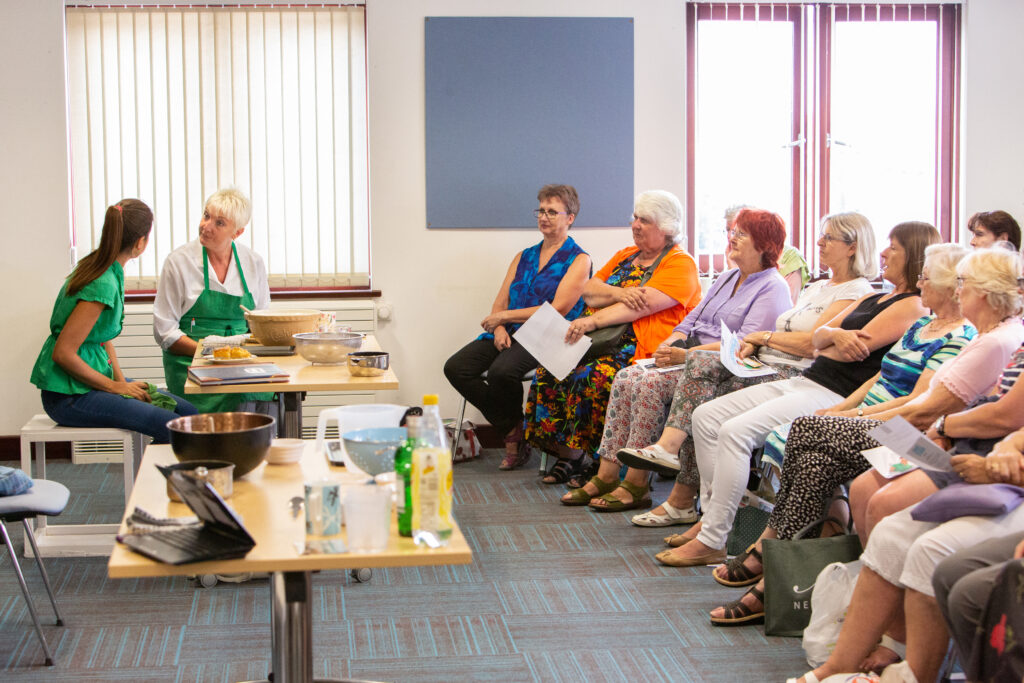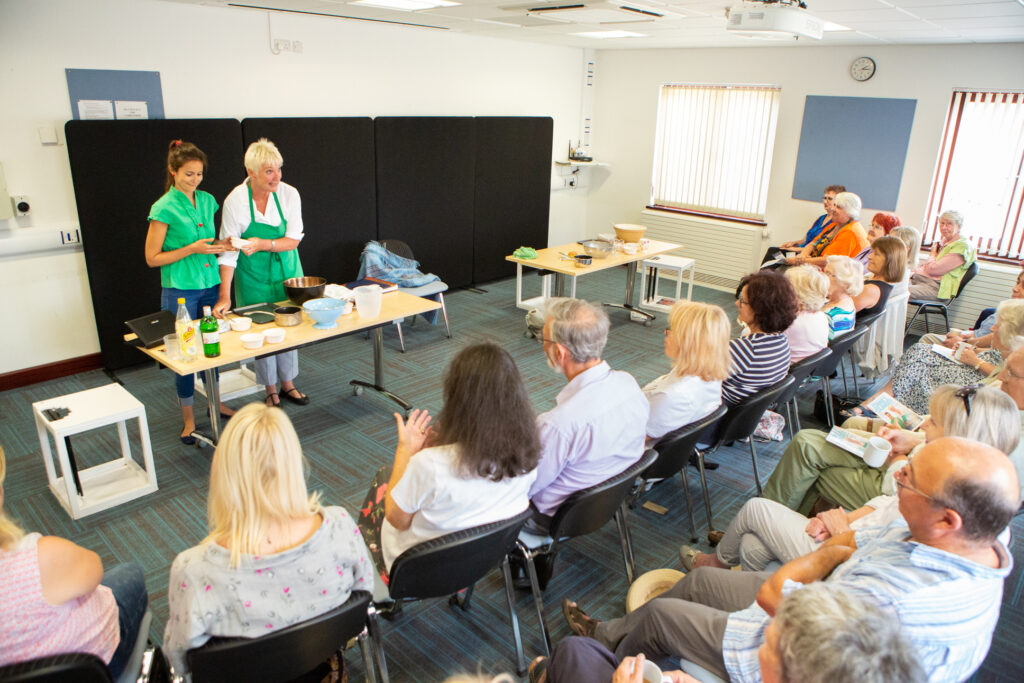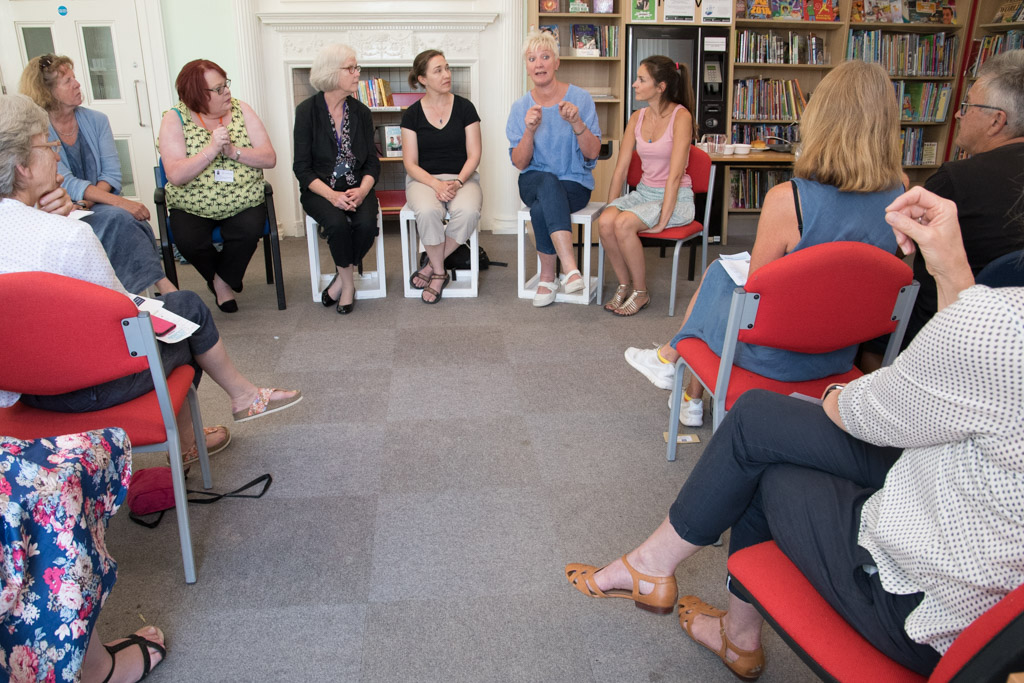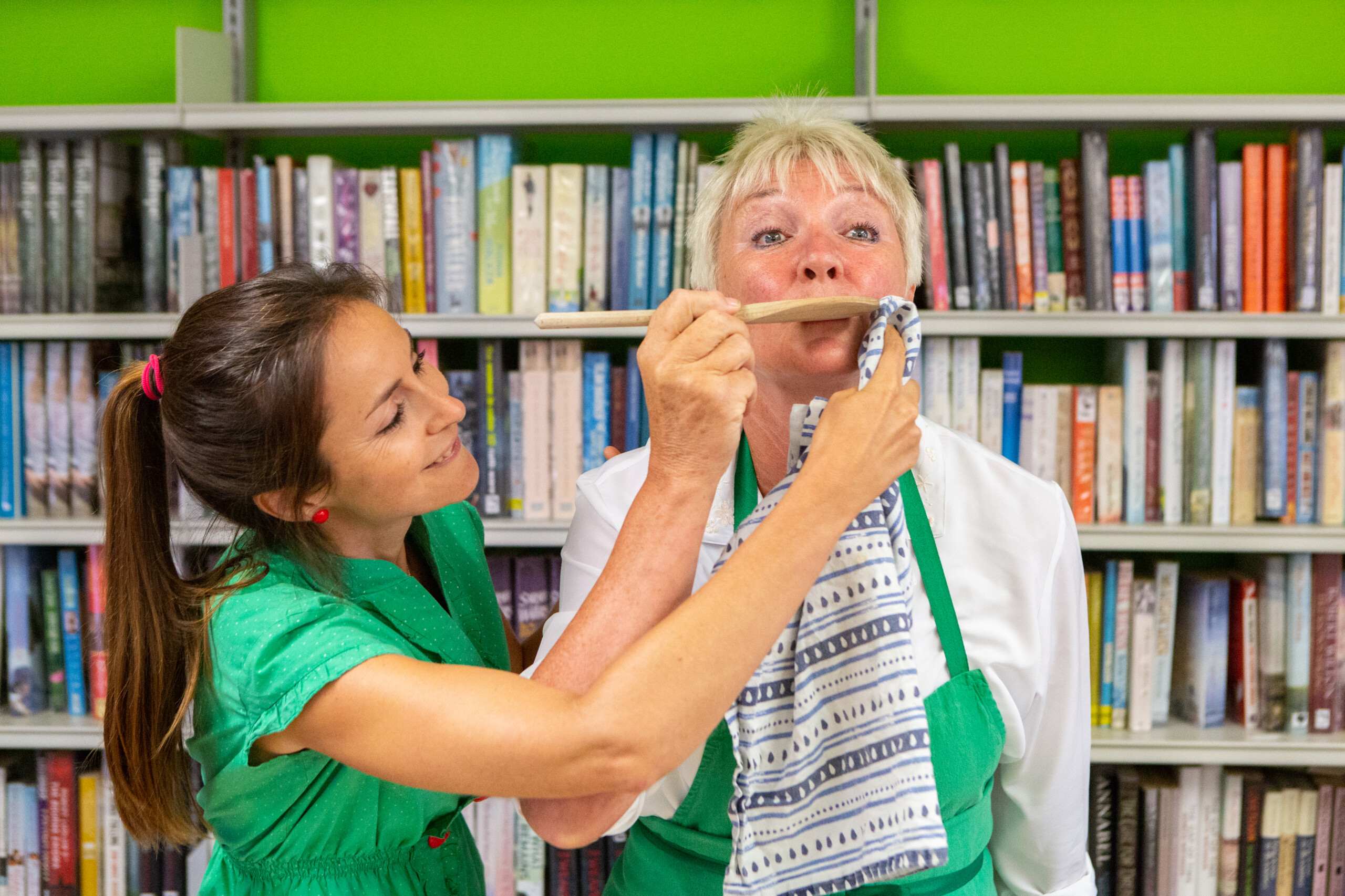Human Story Theatre: Community Driven Touring
Oxfordshire based theatre company Human Story Theatre is improving accessibility to the arts and reducing emissions associated with audience travel at the same time, with their community focused touring strategy.
Instead of asking audiences to travel to their productions, Human Story Theatres goes to them, reaching new audiences by performing in local community centres, libraries and theatres.
Human Story Theatre harnesses the power of original theatrical performance and writing to raise awareness of health and social care issues affecting communities everywhere. Each performance acts as a catalyst to unite communities, signpost to local resources and partners, strengthen relationships with support networks and engage audiences in partner-led post-show Q&As, discussions and debates.
Behind the scenes, they’ve been embedding sustainable practices into productions, working with a small cast of local talent to minimise the travel emissions of artists etc., and sourcing sets and costumes second hand, borrowed and out of skips! They often use stripped back performance spaces with natural light, as well as recycled sets and furniture. These practices are not only lower carbon, but also lower cost, guided by the principles set out in the award-winning Theatre Green Book.


Carbon Literacy Training
Artistic Director & Co-Founder Amy Enticknap recently completed Carbon Literacy Training with Green Arts Oxfordshire Network. Human Story Theatre already had an Environmental Policy that they share with the artists they work with and the venues they perform at, so Amy pledged to revisit it with the HST team to include some high impact actions as a result of the training:
‘Ask cast and crew to travel by walking, cycling, public transport or car-sharing to rehearsals and performances.’
‘For every performance, do a campaign asking our audience to travel to a show by walking, cycling, public transport or car-sharing.’
[GAON members are invited to use an infographic and link to guidance created by GAON, helping audiences to make more sustainable travel choices. You can find out more here: Travel Tips for a Great Day Out in Oxford.]
‘Ask venues we work with to ask audiences to consider travelling to our productions using lower carbon transport options like walking, cycling, car-sharing, buses or trains, on our listings and through booking confirmation emails.’
‘Ask venues to consider switching to renewable energy suppliers Ecotricity, Good Energy or Green Energy UK if they haven’t done so already.’
‘Composting any food waste to prevent emissions produced by waste going to landfill. On top of our own branded compost bin for rehearsals, we will ask venues to consider supplying compost bins as part of their waste management.’
These policies by Human Story Theatre are an inspiring example of going beyond addressing an organisation’s direct scope 1 emissions, to think about how we might be able to reduce scope 3 emissions from suppliers, staff and audience travel through utilising our sphere of influence. We can all ask ourselves: ‘Is there anything I can do to influence the groups I interact with to take actions?’
Amy has been thinking about how the Human Story Theatre Environmental Policy might influence others, including the venues they perform at and the audiences they reach:
“After every show we have a Q&A with guest experts pertaining to the issue in our play. We could use this platform to also add comment about the environmental actions we’re taking, involving the audience directly. We hope these policies will influence behaviour change, that could result in larger actions like venues implementing renewable energy plans or composting their waste. If those in this wider group are influenced to switch their energy providers at home or begin their own compost, the collective action will have a large impact.”
These Q&As have massive potential to engage with audiences:
- To exchange information.
- To raise awareness.
- To encourage responsibility for own health/social care and for that of the community.
- To signpost people to services.
- To create a safe environment to share feelings and experiences, where appropriate.
- To create an opportunity for reflection and possible change.
Engaging Communities
We asked Amy about the value of working with local talent and communities…
“There is a wealth of talent locally and so I think it is a good idea to use the talent on our doorstep when we can! The talent will have links locally to their own personal communities and networks which can increase our audience reach. Also actors who have families are sometimes not able to accept jobs that are touring far away, purely due to logistics and their children, so it means we can provide work for those actors – in essence supporting family life. Environmentally of course, using local talent means our cast and artistic team can walk / cycle or get public transport to rehearsals and performances. The same goes for our audience members.
I think working within local communities and partnering with organisations and charities specific to our home city means we can build stronger relationships quicker, which I think is more sustainable for our future. And hopefully we can eventually become the ‘go to’ health and social care theatre company where organisations begin to approach us to write plays on a particular subject. This has already begun to happen, which is great.”
How do you engage audiences?
“The whole process has always worked organically really; depending on the topic explored in each play, we connect with organisations and charities pertaining to that issue. Everyone has always seemed keen to support us, because our post-show Q&As give opportunity for raising awareness of those organisations. After every show we have a Q&A discussion with a panel of guest experts from organisations pertaining to the issue in the play, who bring with them a wealth of information and can signpost to local services. It is also an opportunity for audience members to share direct lived experience in a safe and supported environment. The Q&As are as important to us, if not more so, than the play itself. Partnerships and working with specific communities is an integral way in which Human Story Theatre works.
Feedback we regularly receive is that a theatrical live performance can be a lot more powerful and engaging that a leaflet handed to someone at a talk. We work in a stripped back, shared space shared light format and there is no ‘fourth wall’ so the audience can feel part of the theatrical action.”
How do you find audiences?
“HST predominantly tours to existing communities, so goes to where the audiences are already, rather than expecting them to come to us. But we also find audiences through our social media channels and mailing list and those of our partner organisations and charities. Often our Q&A speakers bring colleagues or participants of their groups with them to a show, who have never been to the theatre, or rarely. This is a really helpful way of us reaching new audiences.”
Human Story Theatre is a great example of using creative work to encourage behavioural change, through storytelling, sustainable procurement, engaging audiences with Q&As, and communicating clear environmental policies.
Human Story Theatre is interested in exploring the impact of climate change on human health and social issues. What would you like to see explored in a play about climate change?
You can learn more about the work of Human Story Theatre here.
Get in touch with GAON to enquire about Carbon Literacy Training for your team.


